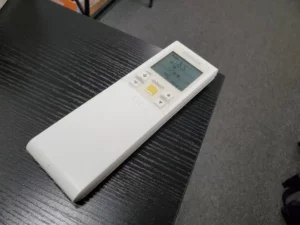Is A Mini-Split Worth The Cost?
Every year we get more “mini” or “nano” technology. Things that used to take up a full room can now fit into your pocket or on your wrist. Well, now you can get mini HVAC systems as well! This kind of system is called a mini-split. Of course, like with any new purchase, people want to know are mini-splits worth the cost? Are they going to get enough value for the price tag?
In a lot of cases, we can honestly say yes. Now, this is not true for all cases and for some homeowners could be better off with sticking with your existing system or purchasing a new central air HVAC system.
Mini-Split systems have been around for a while but have only started gaining popularity in the United States in the last decade or so.
In this post, we’re going to go over the benefits of a mini-split system and explain some situations where you could consider such a system. At the end, you should feel informed enough to decide if a mini-split is worth it for you.
What Are Mini-Split Systems?
Mini Split systems are a form of HVAC that use much less space and equipment than a traditional HVAC system. With a traditional HVAC system, your system could contain a furnace, air conditioner, ductwork, and the vents/registers. A mini-split system has an outdoor unit (compressor), an indoor unit (air handler), and the refrigerant lines that connect them.
The compressor is smaller than a full furnace, and the lines and handler take up much less space than a full duct system. Of course, you can also get a system that has multiple indoor units to heat and cool multiple rooms.
What Do Mini-Splits Do?
A mini-split system can serve as just a stand in for an air conditioner, or it can do both heating and cooling. You can also use a mini split to either cover one room in your home, or multiple rooms. It might provide heating and cooling to your entire home, depending on the layout of your home and the number of air handlers attached to your system.
If you want to know how a mini split provides heating, we have a handy post on that here. But you don’t need to take our word for it, the smart people over at NASA have a handy blog post on the 2nd Law of Thermodynamics, if you’re scientifically inclined.
Practically speaking, this means that a mini-split could be a way to cool an addition without having to add all new duct work, or it can be responsible for all your heating and cooling needs.
So how do you know if a mini-split is right for you?
In the next few sections, we’ll go over the pros and cons of getting a mini-split system.
Benefits of a Mini-Split
To know if a mini-split is worth the cost, you need to know what it can do for you. Some things that a mini-split can do better than alternatives are:
- Run at high efficiency
- Be installed easier than a traditional system
- Run Quieter than almost any other HVAC system
- Be deployed in a way that uniquely fits your needs
Efficient
A mini-split system is one of the most efficient options you have on the market. One reason they are so efficient is the use of inverter technology. What that means is that a mini-split will use less energy to maintain a more consistent temperature throughout the day.
The needs of a space will change throughout the day based on temperature changes both inside and outside of the controlled space. An inverter will adjust output and airflow to match those needs and maintain a temperature without over-correcting. This uses far less energy over the course of a day.
As a disclaimer, you may find some models of mini-split that don’t use an inverter compressor somewhere on the market. However, most modern models are inverter models and all the models we sell are inverters.
Another reason that a mini-split is more efficient than a traditional HVAC system is because it is ductless. The average household will lose about 25% of the energy used for heating due to the ductwork. Now, this can be remedied with efficient design and good insulation, but this is a non-issue with a mini-split system.
Easy to Install
Mini-split systems are remarkably easy to install. They only need to have an outdoor unit, an indoor unit, and the line set to connect them. That means you’re not running ductwork all across your home or having to create space for both a furnace and an air conditioner unit.
That ease of install also means your HVAC contractors are going to install your system quicker. That means less money spent on labor.
Quiet
If your current heating or cooling solution has a loud fan, then it can feel like it takes over your home when it turns on. It could interrupt time with the family, a quiet date, or make conversation much harder.
There are quieter alternatives. Because mini splits don’t use the same blower fans in their air handlers, they don’t produce anywhere near as much sound when they run. In fact, they are some quietest pieces of HVAC equipment.

Versatile
Because a mini-split comprises modular units, it can provide heating and cooling for several situations. If you just need to provide airflow to a recent addition or an open upstairs room, then you can simply add a split system with a single indoor unit to cover that one room.
On the other end of the spectrum, you can use up to 4 indoor units to cover your living area, main sleeping area, and other high traffics areas of your home. Your mini-split system could cover all of your heating and cooling needs.
Downsides of a Mini-Split
Like with any piece of technology, there are downsides to a mini-split. Sometimes, these downsides make it so that a mini-split is not the right option for your home. However, some of these downsides are nothing more than a minor inconvenience.
Entirely Zoned
Mini-splits are not central air systems. This can be a feature for certain situations or a drawback in others. Yes, it means that the system is highly versatile, but it also means that might have a harder time trying to heat or cool a large home with lots of separate rooms. You could, of course, get multiple systems with multiple indoor units, but at a point you would get more value from a central HVAC system.
Takes Up Space
This is more of a matter of taste, but some people have complained that they don’t like the how the indoor unit looks or how much it protrudes from the wall. Not everyone is going to feel the same way about this, and there are ways to tuck the indoor units into a corner so that they are less obtrusive. You can always find reference photos or videos to see if you feel the same way.
Learning New Technology
As with anything new, there is a bit of a learning curve. The way you interact with your HVAC system will remain largely the same. The key difference might be that you use a remote instead of the thermostat to use it.
You could also look into a hard-wired thermostat or even smart control options using Wi-Fi and an app. These options can be much more expensive than using the remote, though.

Additionally, we have gotten questions from customers wondering if their system is working because it is so quiet, or wanting to know how long their run cycles should be.
We do our best to answer questions you might have beforehand on this blog, or when meeting with a sales professional. Mostly, though, it just takes some time to get used to it and to understand what its normal is.
Final Thoughts: Are Mini-Splits Worth The Cost?
Most times, we believe that a mini-split system is worth the cost. Not only can it be an affordable and versatile alternative to a traditional HVAC system, but they can also save money in the long run with how efficient they are. Of course, we can’t make that decision for you.
If you feel like you could benefit from the mentioned features or if you want to get more information before you make your decision, you can contact a local HVAC professional. They will be more than happy to answer questions and help you understand if a mini-split is worth it for you.
Who Are Advantage Heating and Conditioning, LLC?
We are your local HVAC Experts out of Salem, Oregon. We hope that this post gave you the information you need to make a confident decision regarding if a Mini-Split is right for you. If you have other questions about HVAC systems, check out our other blogs. To learn more about who we are and how we can help you, visit our website and follow us on social media – we’re here when you need us!







